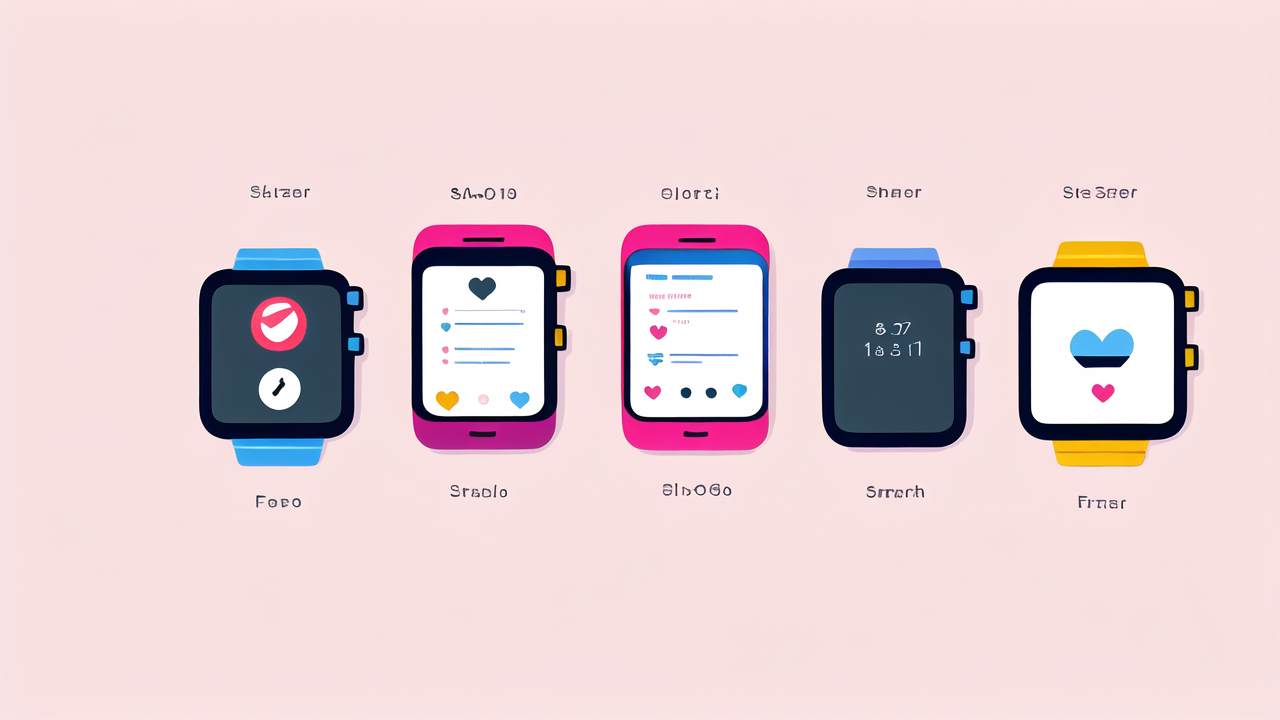Understanding the Rise of Smart Watches in the Health Care Industry
The Evolution of Smart Watch Technology
Smart watches have come a long way since their inception. They started as simple digital timepieces. Now, they're powerful health monitoring devices. The first smart watches could only tell time and run basic apps. Today's models can track heart rate, sleep patterns, and even detect falls.

Smart watch tech has evolved rapidly. Early models had limited battery life and basic sensors. Now, they boast advanced features like ECG monitoring and blood oxygen level tracking. The rise of smart watches in healthcare is due to these improvements. They've become reliable tools for personal health management.
Key Players in the Smart Watch Market
The smart watch market is dominated by a few major players. Apple leads the pack with its Apple Watch series. They've set the standard for health features in smart watches. Fitbit, now owned by Google, focuses on fitness tracking. Samsung's Galaxy Watch line offers a mix of health and smartwatch features.
Other notable brands include Garmin, known for its sports-focused watches. Fossil and Mobvoi offer more traditional-looking smart watches. Each brand has its strengths. Some focus on health tracking, others on style or battery life. This variety gives consumers many options to choose from.
Regulatory Environment for Wearable Devices
The FDA plays a key role in regulating smart watches as health devices. They've created guidelines for wearable tech companies. These rules ensure that health features are safe and accurate. The FDA has cleared some smart watches for specific health monitoring functions.
Privacy is another big concern. Laws like HIPAA protect health data in the US. Smart watch makers must comply with these regulations. They need to ensure user data is secure and private. As smart watches collect more health data, regulations may become stricter.
The Role of Smart Watches in Advancing Personal Health
Integrating Smart Watches with Health Care Systems
Smart watches are becoming part of the healthcare ecosystem. Many hospitals now accept data from these devices. This helps doctors get a more complete picture of a patient's health. Some insurance companies offer incentives for using smart watches.

Integration faces some challenges. Not all healthcare systems can easily use smart watch data. There's a need for standardized data formats. Also, doctors need training to interpret this new data source. Despite these hurdles, progress is being made. More healthcare providers are embracing smart watch integration.
The Importance of Data Accuracy and Privacy
Data accuracy is crucial for smart watches in healthcare. Users and doctors need to trust the data. Most top brands invest heavily in improving sensor accuracy. They often compare their devices to medical-grade equipment. However, smart watches aren't perfect. They can sometimes give false readings.
Privacy is equally important. Smart watches collect sensitive health data. Users need to know their information is safe. Companies use encryption and secure servers to protect data. They also give users control over what data is shared. Balancing data usefulness with privacy remains a challenge.
Case Studies: Success Stories of Smart Watch Adoption
Many success stories highlight the impact of smart watches on health. One notable case is of a man whose Apple Watch detected an irregular heartbeat. This led to early treatment of a serious heart condition. Another case involved a Fitbit user who discovered sleep apnea through sleep tracking.
These stories aren't rare. Many users report improved fitness levels thanks to smart watch motivation. Some have detected early signs of diabetes or hypertension. These cases show how smart watches can be life-changing tools for health management.
Future Prospects: What's Next for Smart Watches in Health Care?
Innovations on the Horizon for Wearable Technology
The future of smart watches in healthcare looks bright. New sensors are being developed all the time. Some companies are working on non-invasive blood glucose monitoring. This could be a game-changer for diabetes management. Others are exploring stress level tracking and improved mental health features.

Artificial intelligence will play a bigger role. AI could help interpret health data more accurately. It might even predict health issues before they become serious. The goal is to make smart watches proactive health tools, not just reactive ones.
Addressing Challenges and Opportunities in the US Market
The US market for smart watches faces both challenges and opportunities. One challenge is making the technology accessible to all. Smart watches can be expensive. There's a risk of creating a health monitoring divide based on income. Companies are working on more affordable options.
Another challenge is battery life. Users want more features, but also longer battery life. Improving battery technology is a key focus. There's also an opportunity to make smart watches more useful for elderly care. Fall detection is just the start. These devices could revolutionize how we care for aging populations.
Potential Impact on Healthcare Services and Patient Outcomes
Smart watches have the potential to transform healthcare services. They could reduce the need for in-person check-ups. This would save time and resources. Continuous monitoring could lead to earlier detection of health issues. This could improve patient outcomes and reduce healthcare costs.
Telemedicine could benefit greatly from smart watch data. Doctors could get real-time health info during video consultations. This could make remote healthcare more effective. Overall, smart watches could help shift healthcare from reactive to proactive. This shift could lead to healthier populations and more efficient healthcare systems.




Leave a comment
This site is protected by hCaptcha and the hCaptcha Privacy Policy and Terms of Service apply.